Garmin Forerunner 970 review: Best features, biggest flaws, and who it’s for
Garmin’s latest triathlon watch is packed with pro features, but only serious athletes will get the most out of it

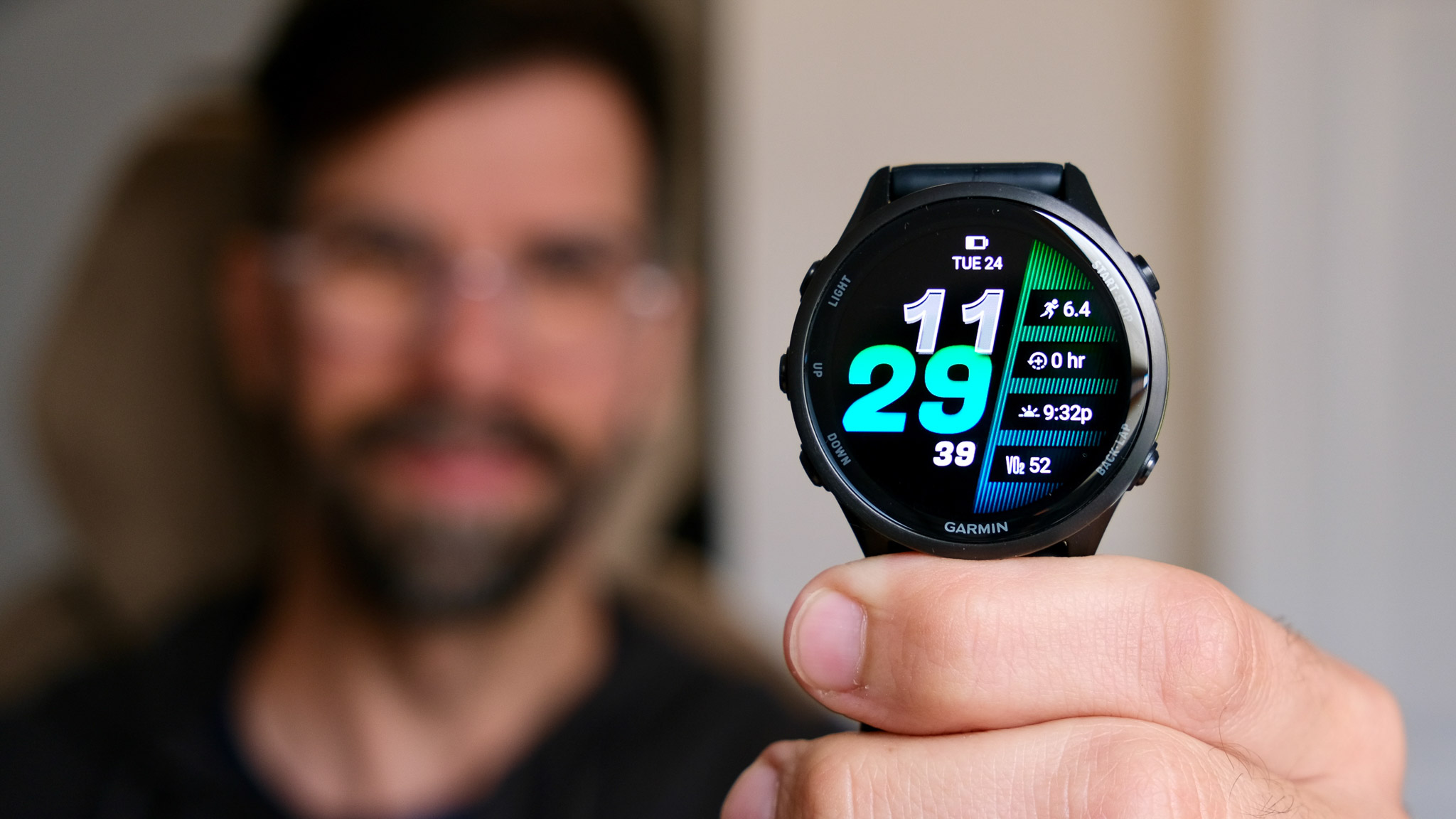

The Forerunner 970 is Garmin’s most advanced triathlon watch yet, with elite-level metrics, premium materials, and a brighter display. But unless you're a serious multisport athlete, the upgrades feel incremental, especially given the added cost of the HRM 600. The Forerunner 965 still offers better value for most users.
-
+
Brighter display
-
+
Physical flashlight
-
+
Scratch-resistant Sapphire lens
-
+
New running features
-
-
Some features are only available when used with the HRM 600 chest strap
-
-
User experience has changed little to none since the Forerunner 965
-
-
Shorter battery life than the Forerunner 965
Why you can trust T3

I must start this Garmin Forerunner 970 review by saying that I still 100% stand by what I said in my Forerunner 965 review: the latter is still the best Forerunner in years. Sure, the new model adds an updated optical sensor unit, a brighter screen, and a scratch-resistant lens, but fundamentally, it’s a very similar watch to its predecessor.
It might sound contradictory to what I’ve just said, but the Forerunner 970 is admittedly the best triathlon watch right now, at least on paper. If you look at the specs, it’s better in almost every way than the Forerunner 965, apart from the battery life, which makes it the de facto best-in-class wearable for professional athletes.
On the other hand, it’s hard to justify the extra money, especially with the predecessor selling for much less than RRP these days. The fact that you also need to buy the new HRM 600 chest strap to unlock two of the three new features also pushes the Forerunner 970 firmly into the ‘professionals-only’ category.
Is it all doom and gloom for the Forerunner 970, though? Definitely not. It’s a brilliant multisport watch that knows exactly what it’s worth. If you’re looking for the best of the best, this smartwatch certainly is your best option.
Garmin Forerunner 970 review
Price and availability
The Forerunner 970 was launched alongside the Forerunner 570 in May 2025 and is available to buy now for the recommended price of $749.99/ £629.99/ AU$ 1,399 at Garmin US, Garmin UK and Garmin AU. It comes in three colours: Carbon grey dlc titanium with black case and black/translucent whitestone band, Titanium with whitestone case and whitestone/translucent amp yellow band and Soft gold titanium with french grey case and french grey/translucent indigo band.
The HRM 600 heart rate monitor, which is required for certain features on the watch, costs $169.99/ £149.99/ AU$ 299 and is also available now at Garmin US, Garmin UK and Garmin AU. This means that to access all the features of the Forerunner 970, you’ll need to shell out $920/ £780/ AU$ 1,700 – not pocket change, for sure.
Specifications
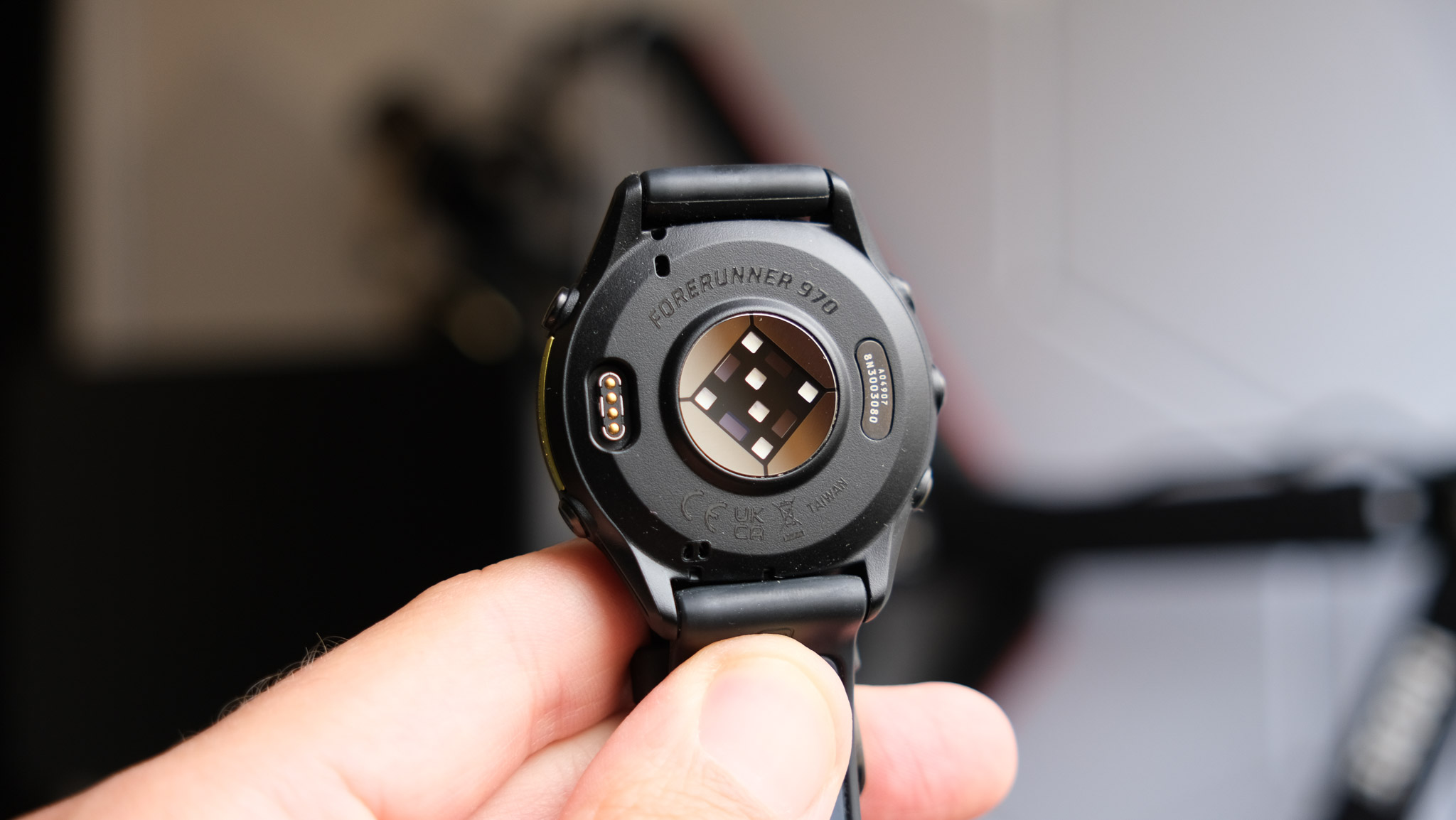
- Weight: 56 g (case only)
- Dimensions: 47 x 47 x 12.9 mm
- Case size: 47mm
- Display: 1.4" AMOLED touchscreen, 454 x 454 pixels
- Lens material: Sapphire crystal
- Bezel material: Titanium
- Battery life: up to 15 days in smartwatch mode
- Water rating: 5 ATM (Withstands pressures equivalent to a depth of 50 metres)
Design and materials
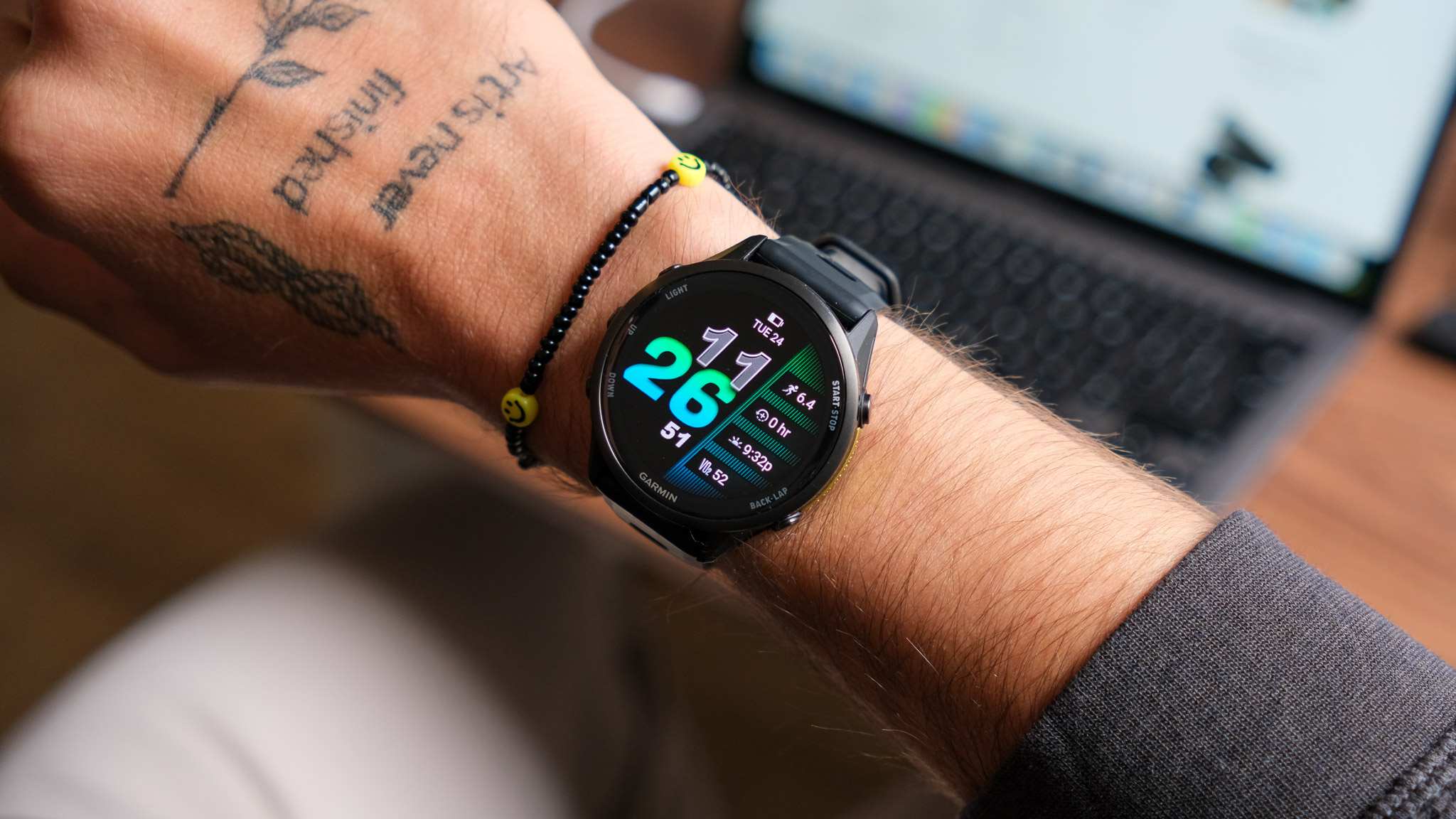
The Forerunner 970’s design is similar to the Forerunner 960. The physical dimensions are almost identical (47 x 47 x 12.9 vs 47.1 x 47.1 x 13.2; 970 and 965, respectively), but the weight has increased slightly to 56 grams (from 53g). In reality, neither of these makes a huge difference.
Get all the latest news, reviews, deals and buying guides on gorgeous tech, home and active products from the T3 experts
The display size is almost the same, too, at 35.3 mm (vs 35.4 mm). Both are touchscreen AMOLED with the same resolution (454 x 454 pixels). However, the Forerunner 970 is brighter than its predecessor, although I can’t tell you how much, as Garmin doesn’t disclose brightness numbers. It looks brighter, for sure.
Another difference is the lens material, which went from quite durable Corning Gorilla Glass DX to scratch-resistant Sapphire Glass. Sapphire is a more premium material, used on most Fenix watches. It also looks different, more glossy than the Corning Gorilla Glass DX.
The case remained reinforced polymer – great for keeping the weight down – while the titanium bezel adds a little pizazz to the construction. Like the rest of the watch, it’s lightweight and durable.
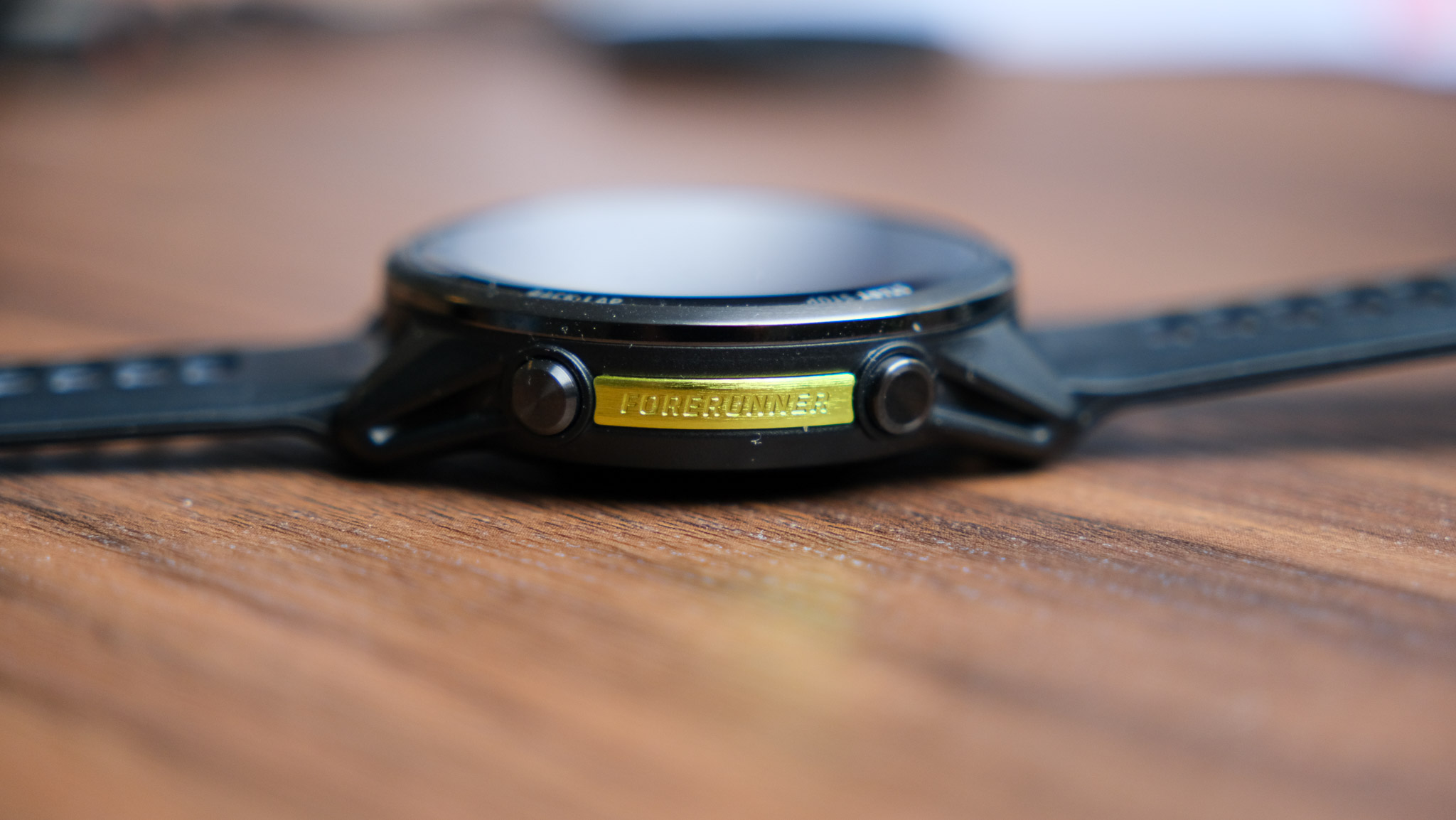
The 5-button layout is the same as it's always been; however, the buttons have changed. I liked the Forerunner 965’s setup, with the functions displayed on the buttons and the larger start/stop button. The function is now displayed on the rim of the display, which makes more sense, I guess, as you’re most likely to observe the watch from that angle.
The lugs have changed, too, but one of the most important updates is the addition of the physical flashlight. I can only assume people have been badgering the brand for this, and it’s been added, finally. Garmin also added a microphone and a speaker, so you can finally talk to your watch, and it can talk back.
Yet another update is the Elevate v5 optical sensor, which is the latest and greatest from the brand. I had no issues with the Elevate v4, but as far as I’m concerned, the v5 is the only one that grants access to features such as ECG. It’s also said to be more accurate, although at this point, we’re talking about marginal gains.
Features
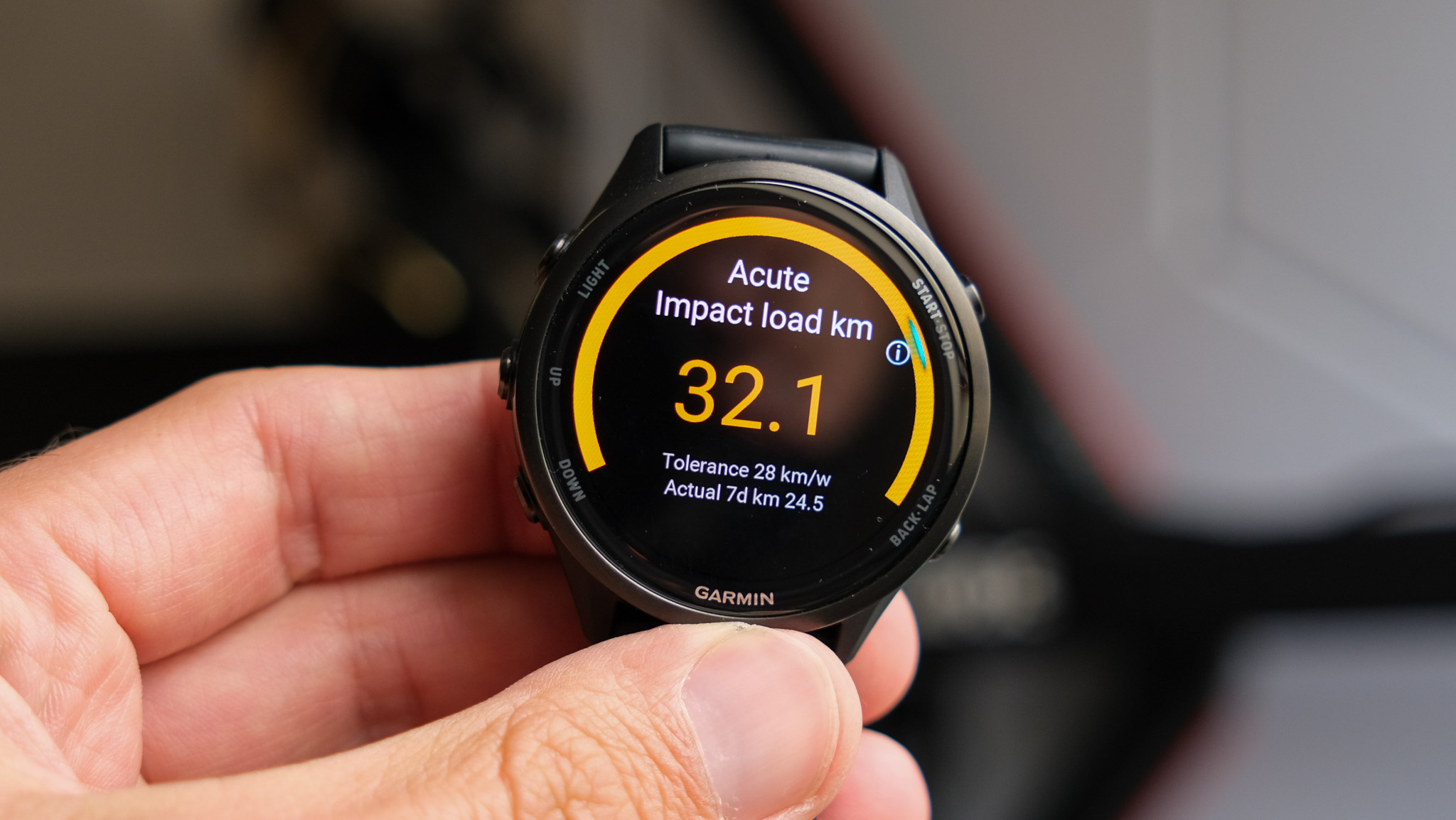
The features on the Forerunner 970 are almost identical to those of other mid-range and high-end Garmin watches, with a few notable differences. The watch introduced three new metrics: Running Economy, Step Speed Loss, and Running Tolerance.
For two of these (Running Economy, Step Speed Loss), you’ll need the HRM 600 heart rate monitor, announced at the same time as the Garmin Forerunner 570 and 970. Running Tolerance is similar to Training Load, but focuses on mileage, with your watch keeping tabs on how much running your body can take at any given time.
Step Speed Loss is exactly what it sounds like. Essentially, the Forerunner 970 (and HRM 600) can track how much speed you lose when hitting the ground. The lower the number, the better – it means you’re moving efficiently with very little energy loss upon ground contact.
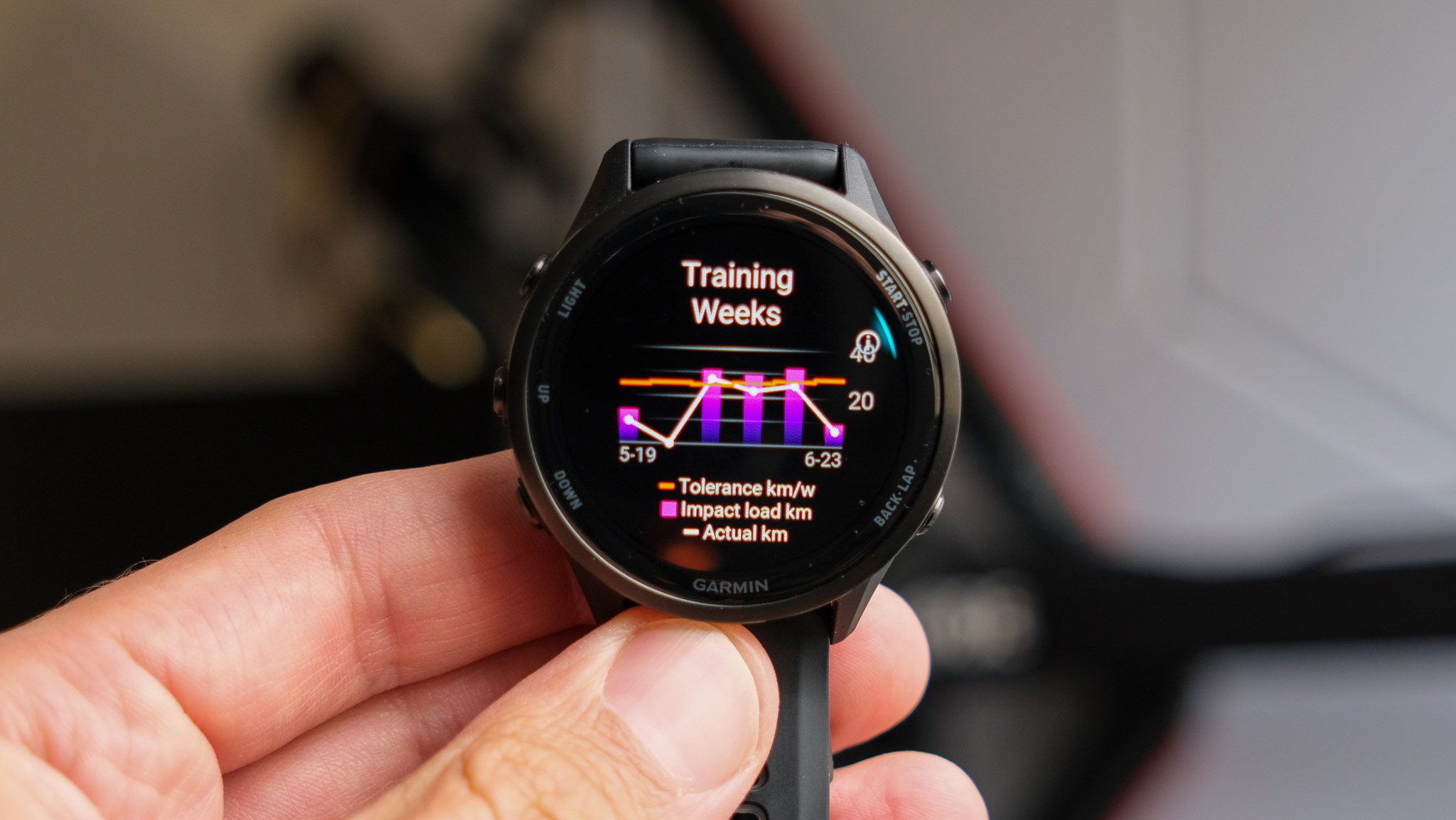
Running Economy is an elusive feature that I’m still trying to unlock. You need to log at least five steady runs of at least half an hour on flat terrain for this to appear. Now, I logged a lot more than that, but I still don’t have an estimate.
I’ve been on the phone about this with the brand, and they suggested a couple of things, including trying to run on a track and making sure the connection between my watch and the heart rate monitor is closed. I must admit, the first 6-7 runs were logged using an open connection, and when I switched to closed, the watch refused to connect to the HRM 600, so I ended up doing two runs without chest strap data.
You see, when you switch connection type – as easy as double-pressing the button on the HRM 600 – you have to reconnect the chest strap to the watch. Before that, you must delete the already connected HRM 600 from the device list. It’s a bit of a faff, to be honest; not to mention, it’s also not impossible to accidentally switch between modes and miss a session.
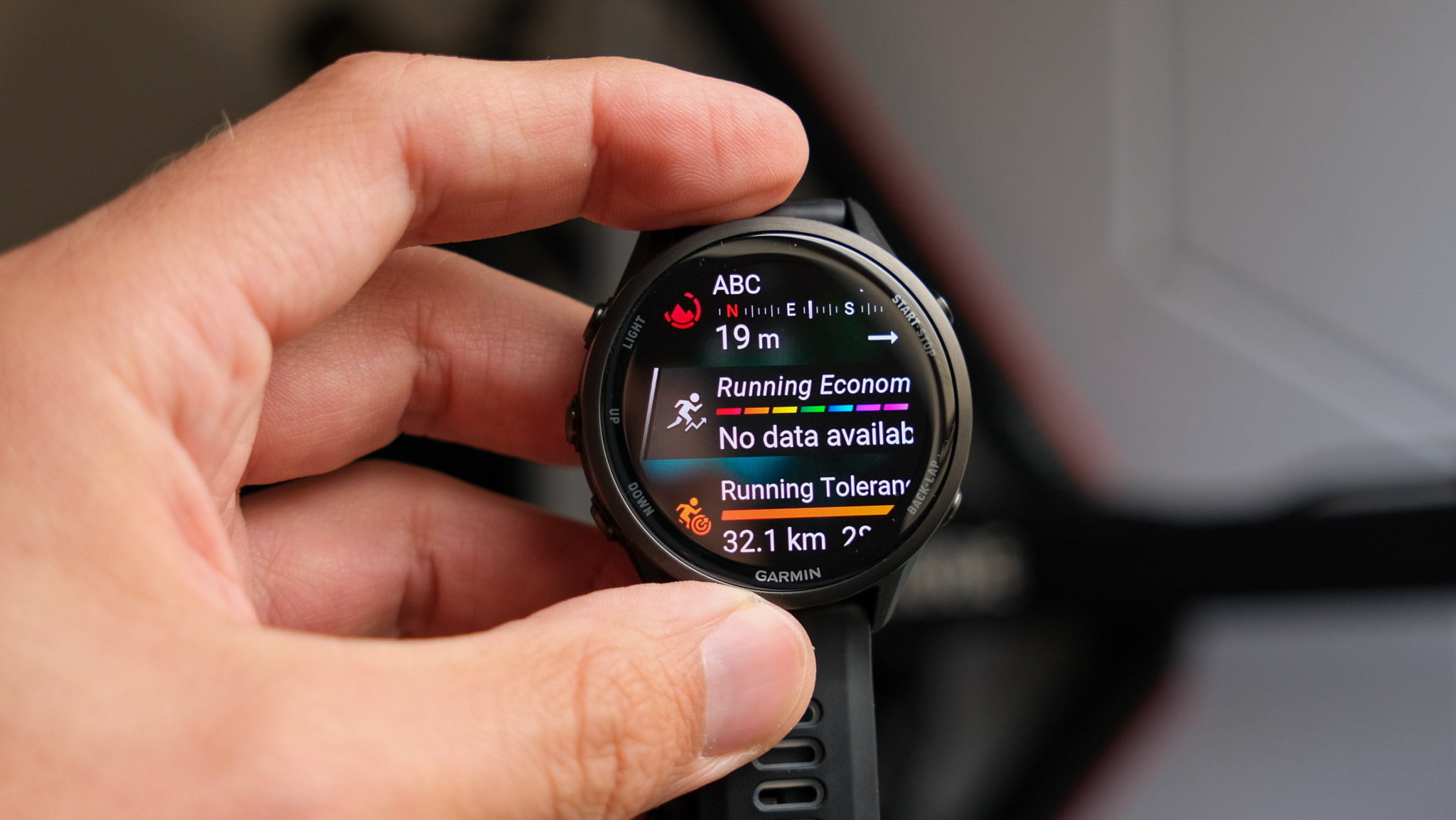
So far, I have over 10 runs logged with the Forerunner 970 + HRM 600 combo, and still no sign of a Running Economy estimate. Looking at what is required for it to appear, the feature certainly is aimed at long-distance runners.
However, even those who will do workouts (or, more like, should do workouts) to improve performance, so it might take a while for everyone to conjure a Running Economy estimation. Bottom line is that everyone will get one, but it might not appear within a week. #wearabletesterproblems
On top of the three new features, you get all the health, fitness and recovery features you’d expect from a Garmin in 2025. I won’t list all of these, as it would take quite a while to do so. Some of the new ones include ECG, skin temperature measurements, breathing disturbances during sleep, and my favourite, the Evening Report.
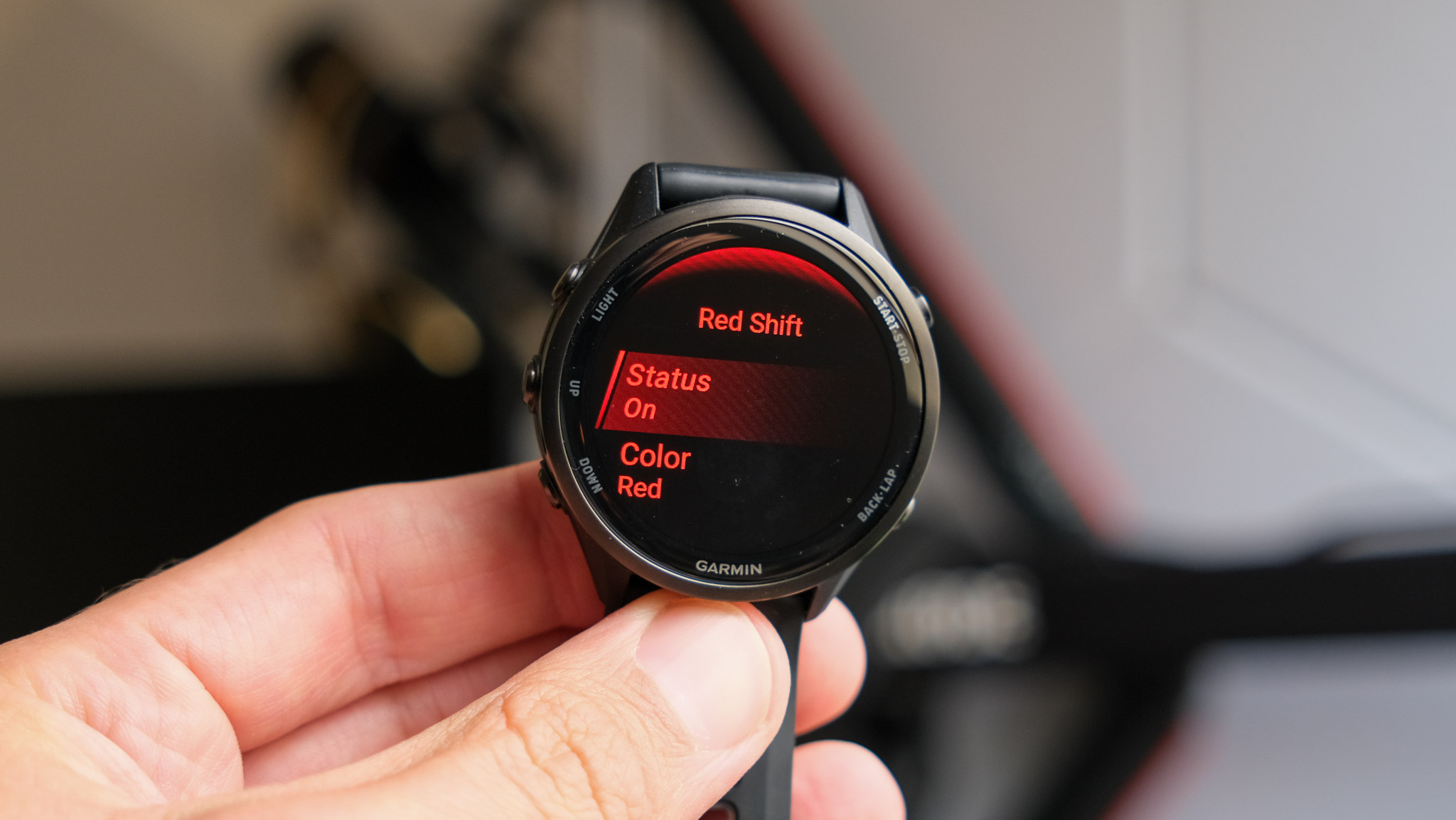
The Forerunner 970 does Red Shift for more pleasant nocturnal training adventures
The Forerunner 970 adds an exciting racing feature I’m yet to try out, Suggested Finish Line, which suggests trimming data to the finish line if you forget to hit stop at the end of a race. Another race-focused feature automatically adds laps at timing gates when following a course during a run. If this works, it could eliminate the frustration all runners (and triathletes) feel when the gate appears way too late for what your watch is saying.
Triathletes will be happy to hear that the Forerunner 970 now offers Garmin Triathlon Coach training plans (and they are free, too). This provides personalised workouts based on performance, recovery and health metrics, similar to the running and cycling coach.
I find these somewhat cautious, often knocking down the mileage if you’ve been training hard during the week, so take the recommendations with a pinch of salt. On a more positive note, the Forerunner 970 offers custom multisport workouts via the Connect app, if that’s something you’re interested in doing.
Performance and accuracy
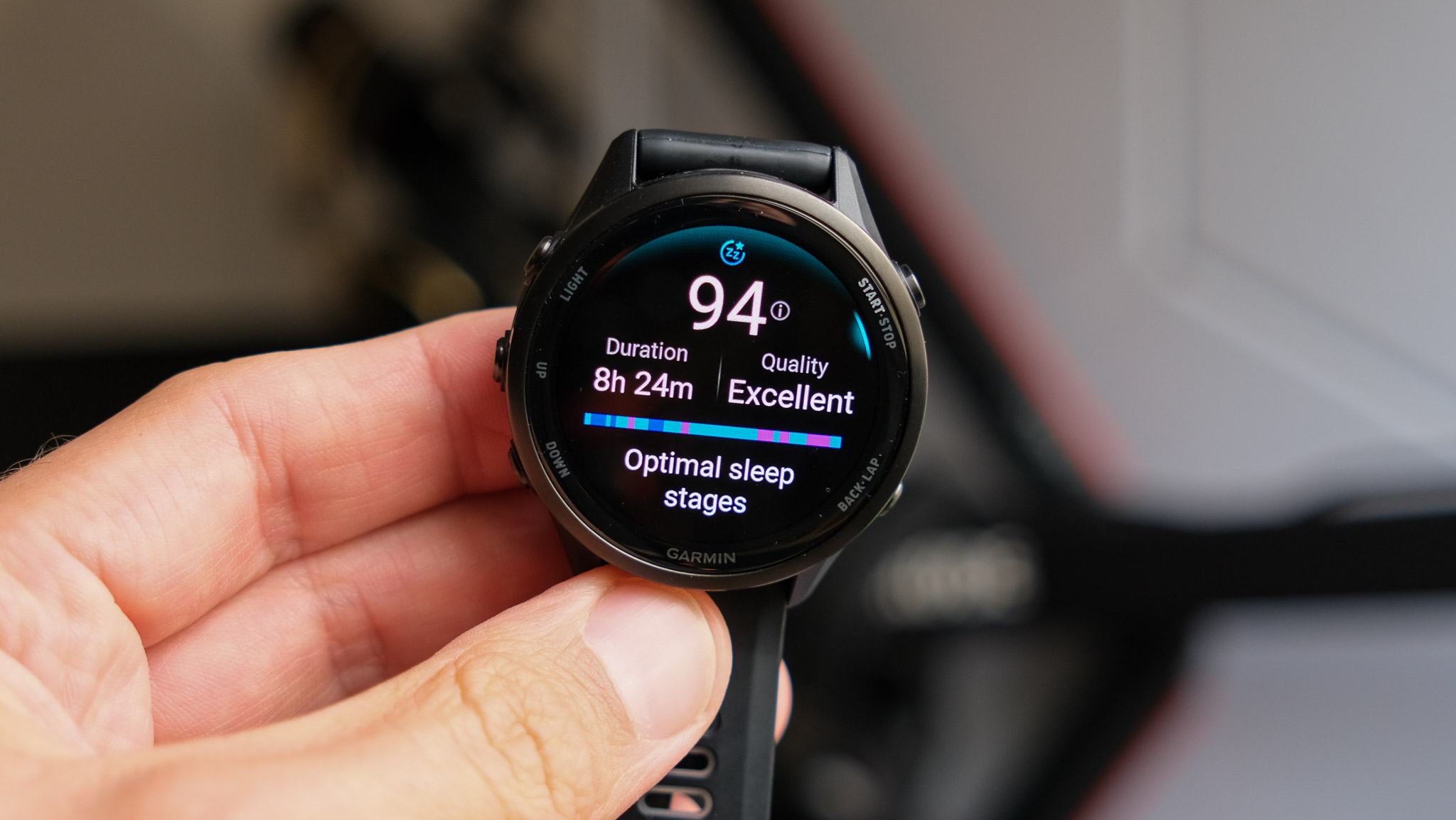
I ran all my runs with the HRM 600, apart from those two times when the watch didn’t recognise the strap, so I’m yet to determine how accurate the optical sensor is.
Based on my experience with other Elevate v5 Garmins (incl. Garmin Fenix 7 Pro, Epix Pro (Gen 2), Garmin Fenix 8 and Venu 3 and 3S), I expect the Forerunner 970 to be spot on in tracking steady cardio and pretty good at monitoring high-intensity movement.
As always, relying on the optical sensor only (i.e. not using a chest strap) will always mean the data displayed on the watch is somewhat delayed, but it’s a good enough estimate in most cases.
The Forerunner 970 uses a multi-band GNSS system and is SatIQ-enabled, which automatically switches between different modes to balance battery usage and accuracy. I’ve been using it alongside the Polar Grit X2, and the two marked miles in perfect harmony, session after session.
Overall, I expect the Forerunner 970 to be one of the most accurate performance wearables out there. I’ll confirm this later once I've logged more sessions (and, hopefully, unlocked my Running Economy estimate in the process).
Battery life and charging

One area where the Forerunner 970 didn’t improve upon its predecessor is battery life. In fact, smartwatch battery life is a lot poorer than the Forerunner 965, although still very decent at just over two weeks (15 days).
Garmin says the lacklustre smartwatch battery life is due to two factors: the brighter display and the way they estimate battery life, the latter of which assumes that you’ll use every feature of the watch at least a little bit every day.
If you, like me, don’t much care about the microphone, speaker or SpO2 readings, you can easily add a couple of days to that 15 days. The same goes to those who don’t touch the watch every two seconds, although I’m sure it’s hard, especially at the beginning, after spending so much money on a wearable.
SatIQ battery life is slightly better than the Forerunner 965 (23 vs 22 hours), and so are all the other GPS modes, apart from GPS-Only (26 vs 31 hours). Listening to offline music while running using running headphones connected directly to the watch eats up battery life, although it’s not actually that bad at 12 hours.
Verdict
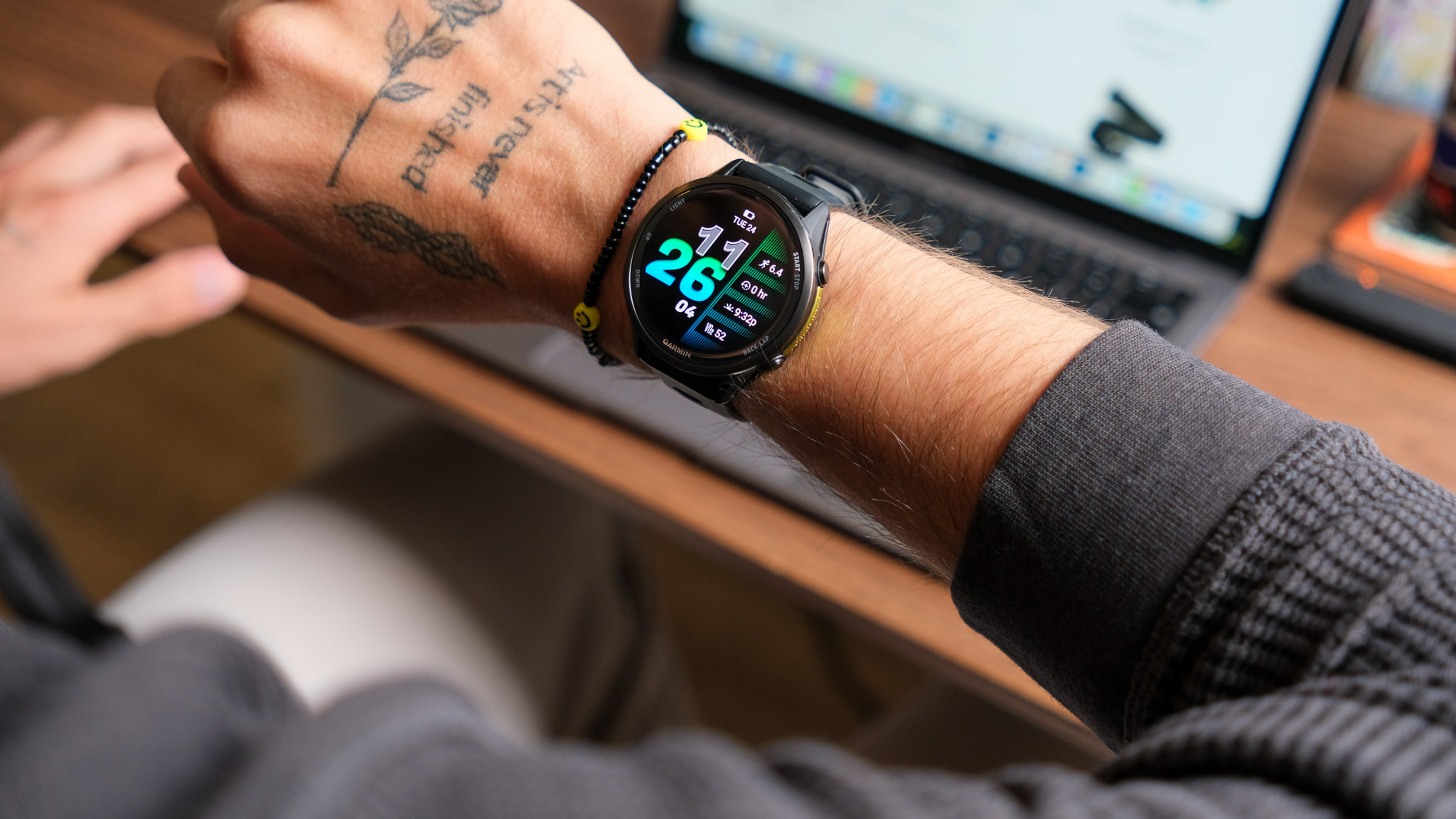
The Garmin Forerunner 970 is, hands down, the best triathlon watch you can buy right now. It’s premium, powerful and packed with features designed for serious multisport athletes.
From a brighter AMOLED display and physical flashlight to cutting-edge running metrics like Step Speed Loss and Running Economy, it’s a wearable that means business. But there’s a catch (or, more like, a few).
Unless you’re a data-obsessed pro or training at a very high level, most of these updates won’t feel essential. Many of the headline features require the new HRM 600 chest strap, which adds to the already high price tag. And while the design upgrades are welcome, the user experience is near identical to the Forerunner 965, which now sells for considerably less.
Yes, the 970 is brilliant. Yes, it’s Garmin at its most Garmin. But the average athlete won’t need most of what it offers. It’s also possible that some new features might never trickle down to cheaper models due to sensor limitations, though in time, Garmin could soften that stance.
If you want nothing but the best for multisport training, the Forerunner 970 is it. For everyone else, the Forerunner 965 remains the smarter and more sensible pick.

Matt Kollat is a journalist and content creator who works for T3.com and its magazine counterpart as an Active Editor. His areas of expertise include wearables, drones, fitness equipment, nutrition and outdoor gear. He joined T3 in 2019. His byline appears in several publications, including Techradar and Fit&Well, and more. Matt also collaborated with other content creators (e.g. Garage Gym Reviews) and judged many awards, such as the European Specialist Sports Nutrition Alliance's ESSNawards. When he isn't working out, running or cycling, you'll find him roaming the countryside and trying out new podcasting and content creation equipment.
You must confirm your public display name before commenting
Please logout and then login again, you will then be prompted to enter your display name.